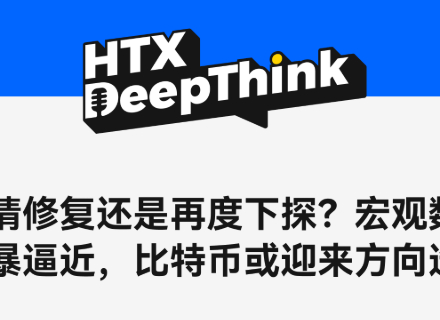The breakout moment for "prediction markets": ICE enters the field, Hyperliquid increases investment—why are giants competing for "pricing uncertainty"?
Chainfeeds Guide:
The parent company of the New York Stock Exchange makes a move, raising $2 billion in financing and reaching a valuation of nearly $10 billion, thoroughly putting the prediction market under the spotlight.
Source:
Author:
imToken Labs
Opinion:
imToken Labs: As is well known, the main theme of Ethereum’s development has long been “scaling.” With the maturity of L2 Rollup solutions such as Arbitrum and Optimism in recent years, and the gradual implementation of foundational protocols like Danksharding and EIP-4844, Ethereum’s basic computational capacity and throughput have improved significantly, especially as the L2 ecosystem has built a solid “execution layer” foundation. It can be said that after years of exploration, Ethereum has initially solved the problem of “usability,” but the harder question is the next one—who will use it, and how will it be used? After all, the challenges facing Ethereum have never been as severe as they are now: on one hand, high-performance public chains like Solana and Sui are eroding the on-chain market with their “faster and cheaper” positioning; on the other hand, traditional Web2 giants such as Visa, Stripe, Paypal, Robinhood, and even Fidelity are launching their own public chains or integrating decentralized clearing and settlement systems to improve their Crypto/TradFi layouts. Looking back over the past five years, on the application layer, Ethereum has undoubtedly been a hotbed of innovation, almost the best “composable on-chain financial laboratory,” supporting the entire Web3 wave of experimentation from DeFi, NFT, DAO, GameFi to SocialFi. However, this phase of innovation has mainly targeted Web3 native users and has essentially remained limited to the “self-circulation of on-chain capital.” In other words, funds circulate on-chain and protocols stack on-chain, but real-world assets, institutions, and users remain on the sidelines. Web3 is logically self-consistent, but it is difficult to connect with the real financial world’s needs. In this competitive landscape, Ethereum’s “technological leadership” is no longer a moat. To continue growing, it must answer a bigger question: how to break through the boundaries of Web3 itself and become the true global asset settlement layer? The new growth is coming from outside Web3—AI’s demand for computing power and traditional finance’s settlement needs are simultaneously driving it into a new cycle. The most typical example is the RWA (Real World Asset) tokenization wave—traditional financial institutions such as banks, brokerages, and fund companies are actively trying to move assets like bonds, stocks, and fund shares onto the blockchain to achieve on-chain clearing and real-time settlement (see also “Ethereum Narrative Shift: From World Computer to World Ledger, Is an On-Chain Central Bank Emerging?”). At the same time, as AI models and data monopolies intensify, the AI industry desires a neutral and trustworthy settlement layer to solve core pain points, including model and data ownership confirmation, decentralized computation verification, and resistance to centralization risks. In short, AI needs a globally verifiable computation layer to price trust, and blockchain is naturally suited to this need. Of course, to support the demands of TradFi and AI, Ethereum must comprehensively upgrade in terms of performance, privacy, and modularity. 02 New Roadmap: Multi-pronged Progress in zkVM, AI, and Privacy To address these new demands, the Ethereum community and Foundation are already advancing several key strategies. Below are the more public and widely discussed roadmap directions. First is zkVM (Zero-Knowledge Virtual Machine), which is not just a technical extension of L2 scaling but a disruptive reshaping of Ethereum mainnet functionality. For example, the Ethereum Foundation is currently advancing a mainnet-level zkVM architecture, where transaction verification is replaced by zero-knowledge proofs (ZKP) instead of repeated execution, greatly improving throughput and security. The core logic of zkVM lies in transforming the trust model, because traditional Ethereum relies on all nodes to re-execute transactions to reach consensus, while the greatest advantage of zkVM is that it allows verification nodes to no longer re-execute all transactions but only verify proofs, significantly reducing synchronization and execution costs. Under this new architecture, Ethereum mainnet is expected to become a “computation settlement layer,” focusing on verifying ZK proofs and anchoring final states, while L2 becomes an efficient “execution layer,” enabling Ethereum to evolve from a blockchain into a global verifiable computation layer. Last month, Vitalik Buterin retweeted and praised the minimal zkVM for Ethereum proposed by developers, optimized for XMSS aggregation and recursion. Compared to Cairo, leanVM minimizes commitment costs with a four-instruction ISA, multilinear STARK, and logup lookup. Another clear signal is that on September 15, the Ethereum Foundation established the AI team “dAI,” dedicated to building a decentralized AI ecosystem, marking that Ethereum is no longer passively “used by AI” but is actively “integrating with AI.” The core task of the dAI team is to invest resources in defining standards, incentives, and governance structures for AI models on the blockchain, including model credibility: how to ensure transparency of AI model training data, how to use ZK technology to prove the integrity of model inference, and the formulation of new standards—for example, to better serve the AI ecosystem, the community is advancing new standards such as ERC-8004 and x402: ERC-8004 aims to establish a “composable and accessible” decentralized AI infrastructure layer, allowing developers to easily build and integrate AI model services; x402 is dedicated to defining a unified on-chain payment and settlement standard to ensure users can efficiently and atomically make micropayments when accessing AI models, storing data, or using decentralized computing services on-chain. Through these efforts, Ethereum is attempting to define the underlying protocol and settlement mechanism for decentralized AI, positioning itself as the “value settlement and trust layer for decentralized AI.”
SourceDisclaimer: The content of this article solely reflects the author's opinion and does not represent the platform in any capacity. This article is not intended to serve as a reference for making investment decisions.
You may also like
Ethereum Staking Weekly Report December 1, 2025
🌟🌟Core Data on ETH Staking🌟🌟 1️⃣ Ebunker ETH staking yield: 3.27% 2️⃣ stETH...

The Blood and Tears Files of Crypto Veterans: Collapses, Hacks, and Insider Schemes—No One Can Escape
The article describes the loss experiences of several cryptocurrency investors, including exchange exits, failed insider information, hacker attacks, contract liquidations, and scams by acquaintances. It shares their lessons learned and investment strategies. Summary generated by Mars AI This summary was produced by the Mars AI model, and the accuracy and completeness of its generated content are still in the process of iterative improvement.

Mars Morning News | Federal Reserve officials to advance stablecoin regulatory framework; US SEC Chairman to deliver a speech at the New York Stock Exchange tonight
Federal Reserve officials plan to advance the formulation of stablecoin regulatory rules. The SEC Chair will deliver a speech on the future vision of capital markets. Grayscale will launch the first Chainlink spot ETF. A Coinbase executive has been sued by shareholders for alleged insider trading. The cryptocurrency market fear index has dropped to 23. Summary generated by Mars AI This summary was generated by the Mars AI model, and the accuracy and completeness of its content are still in the process of iterative updates.

OECD's latest forecast: The global interest rate cut cycle will end in 2026!
According to the latest forecast from the OECD, major central banks such as the Federal Reserve and the European Central Bank may have few "bullets" left under the dual pressures of high debt and inflation.
